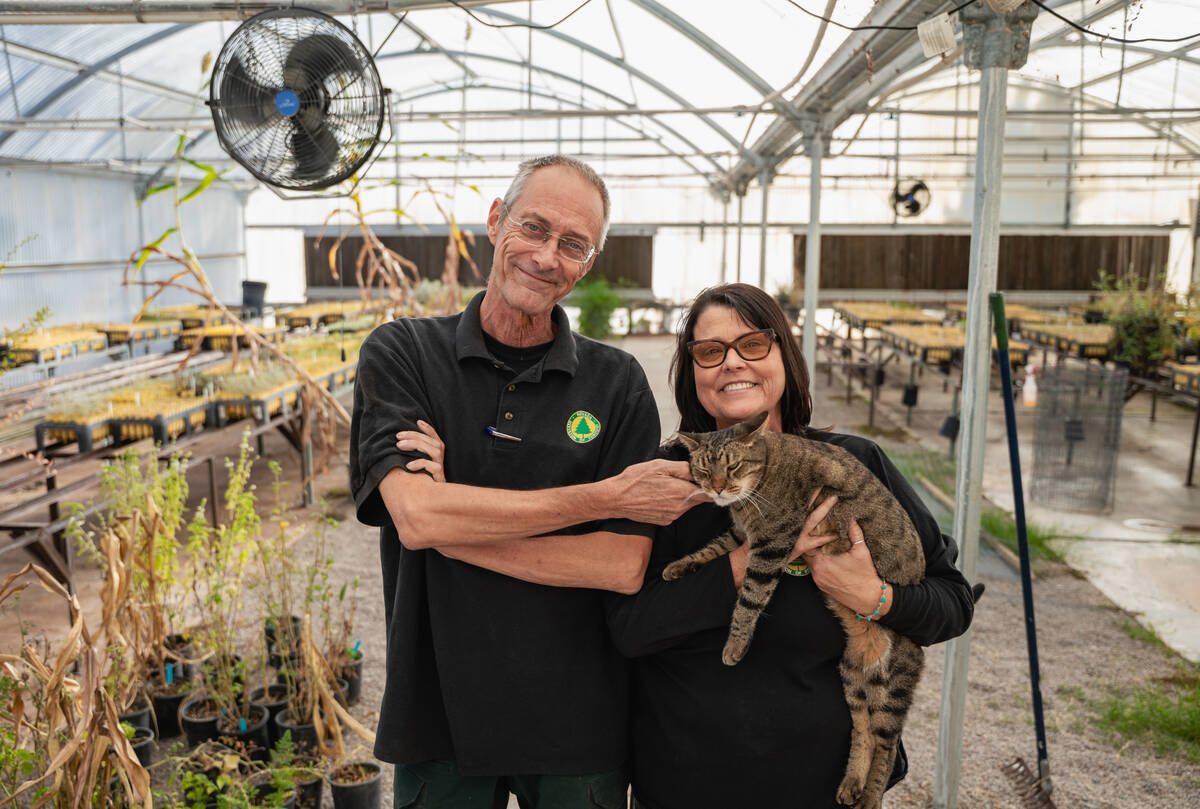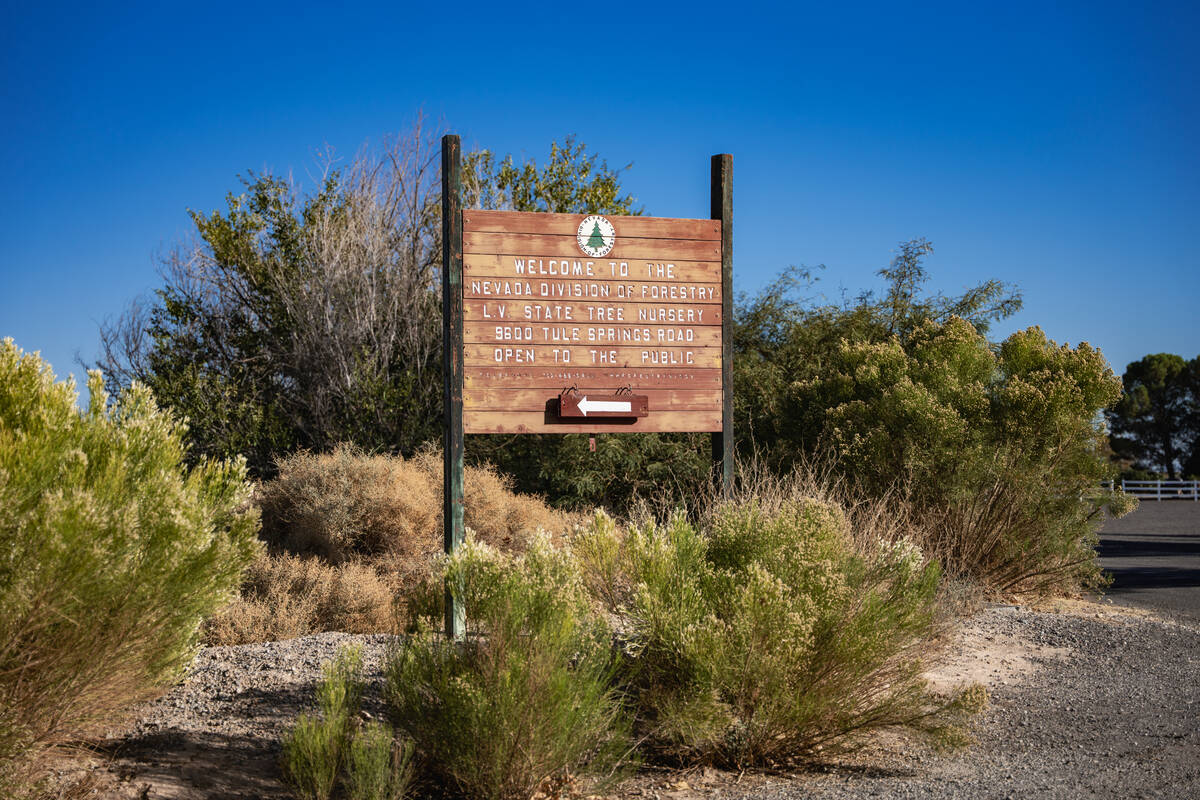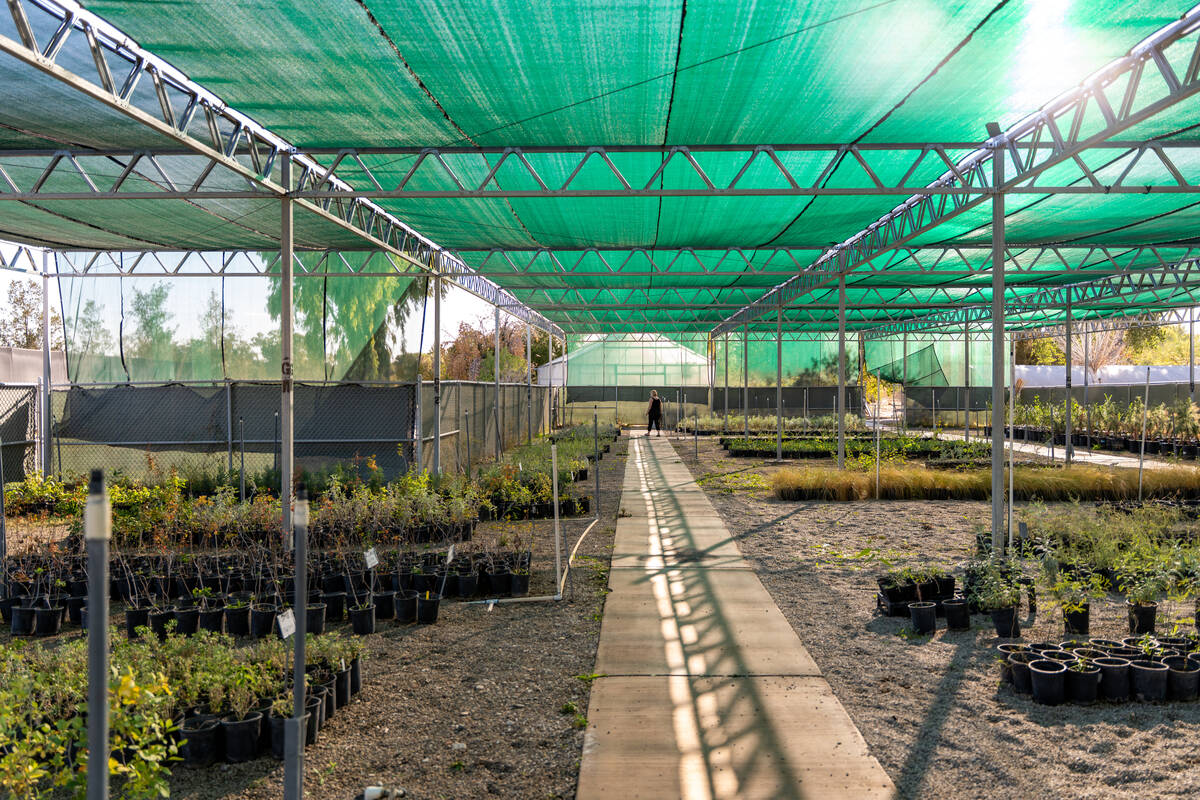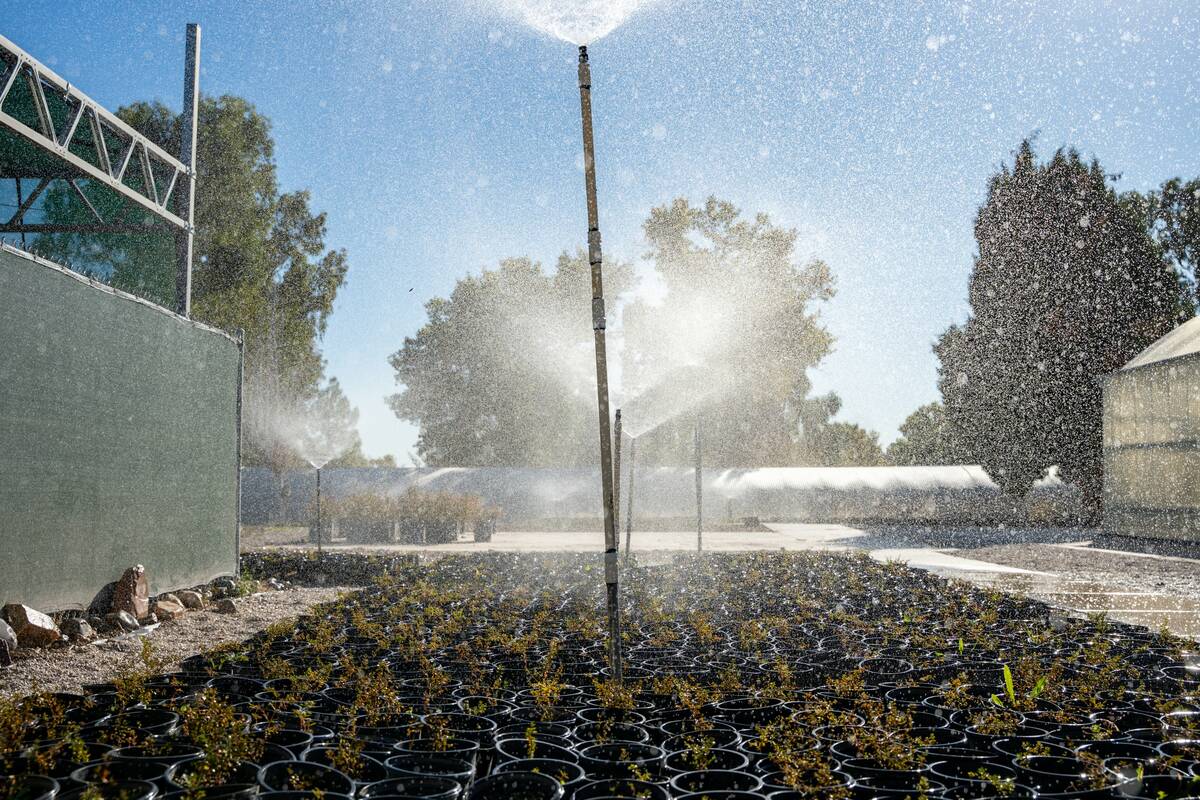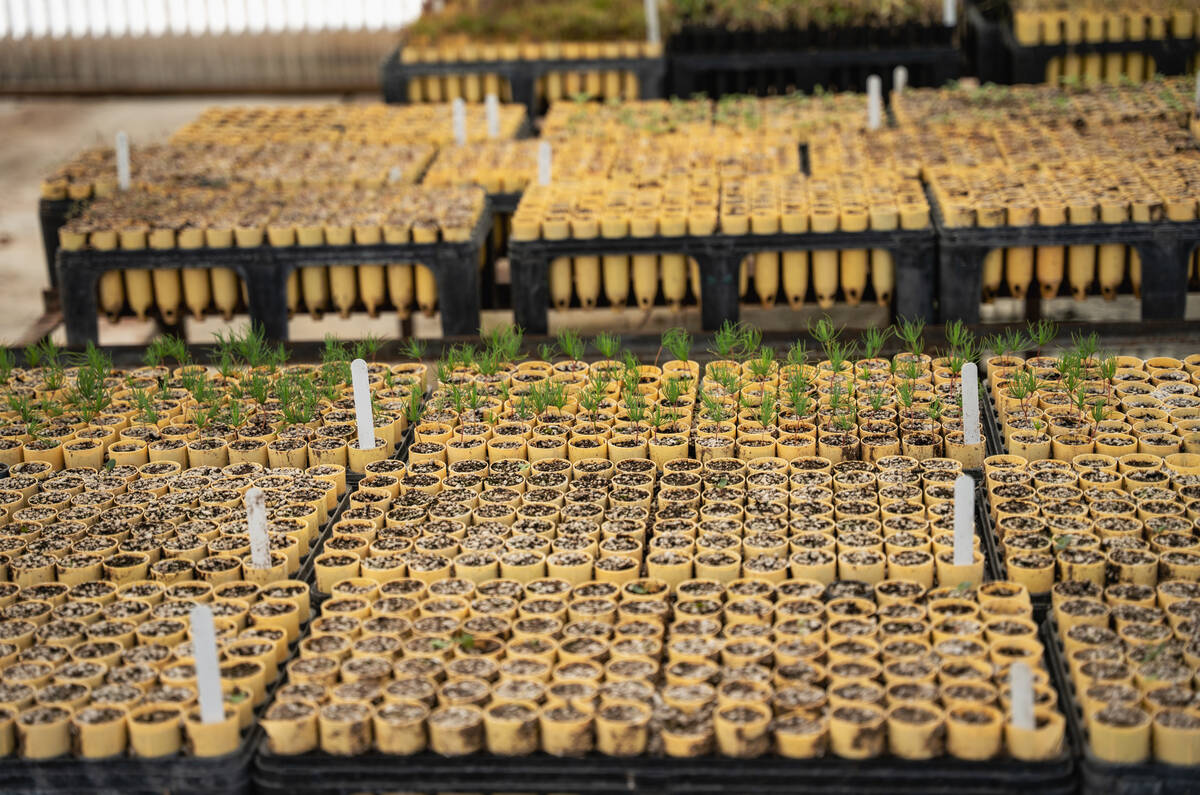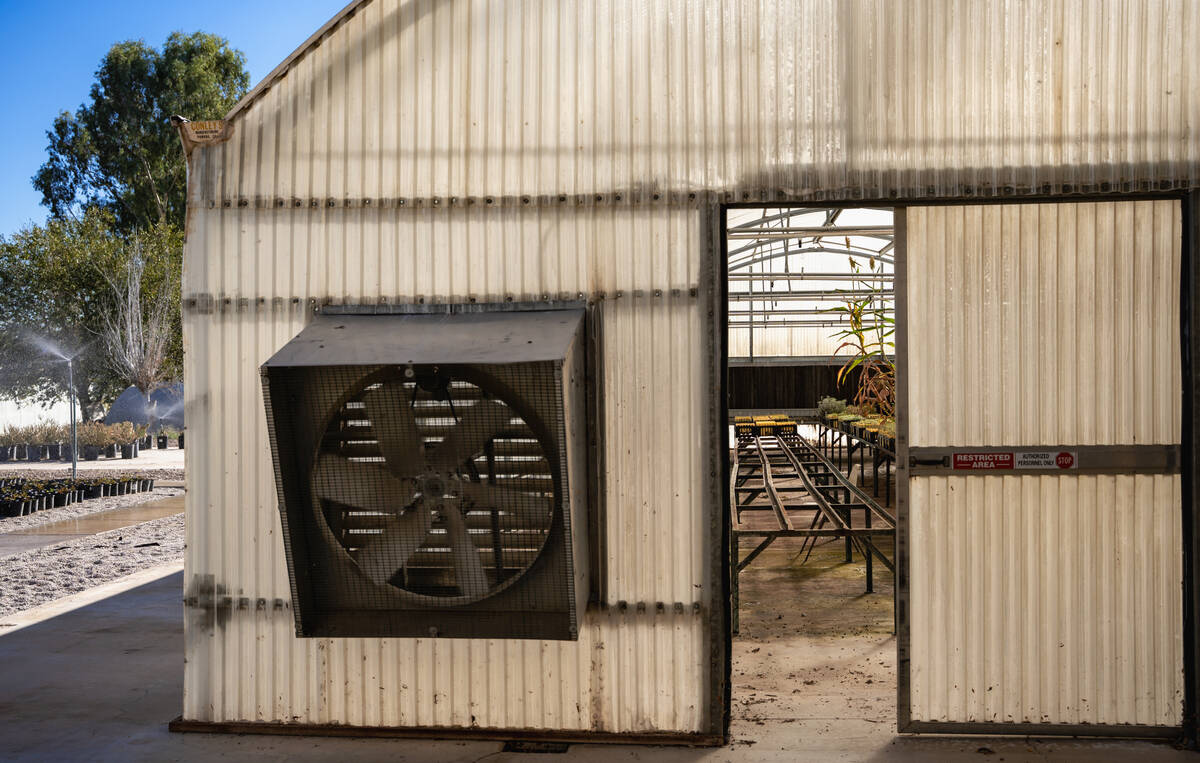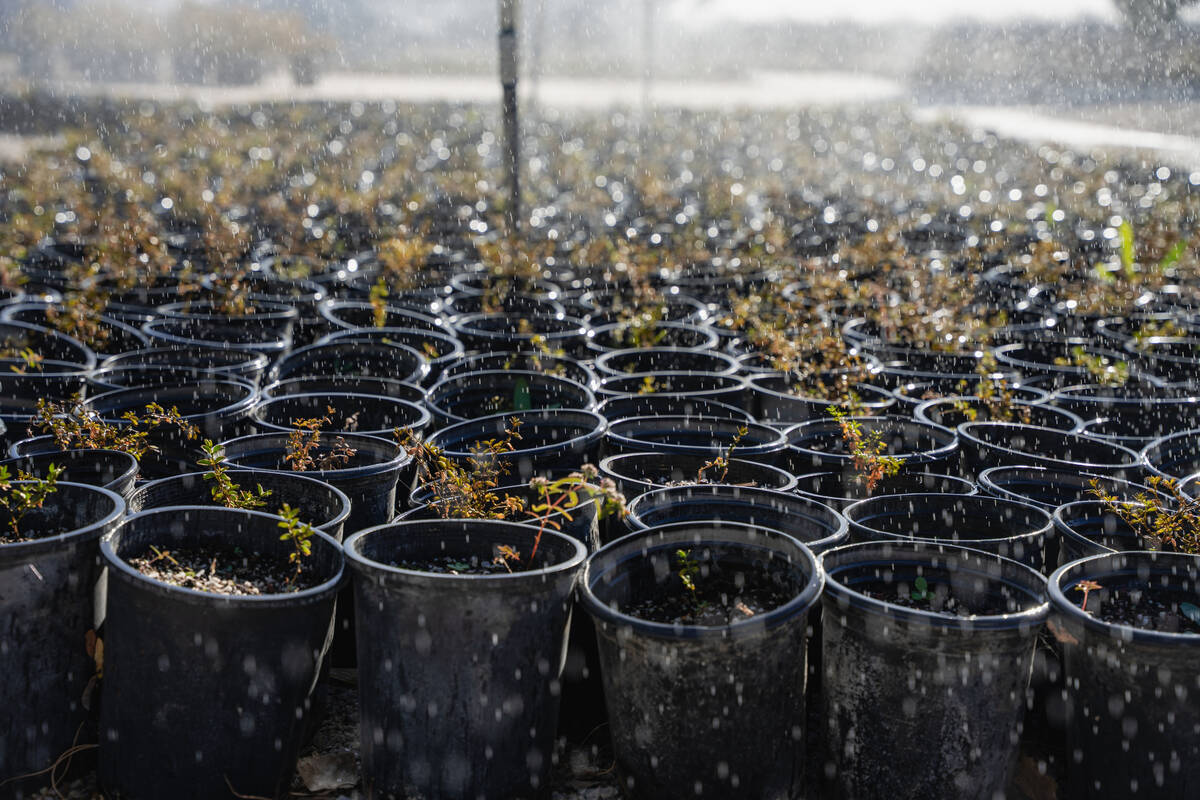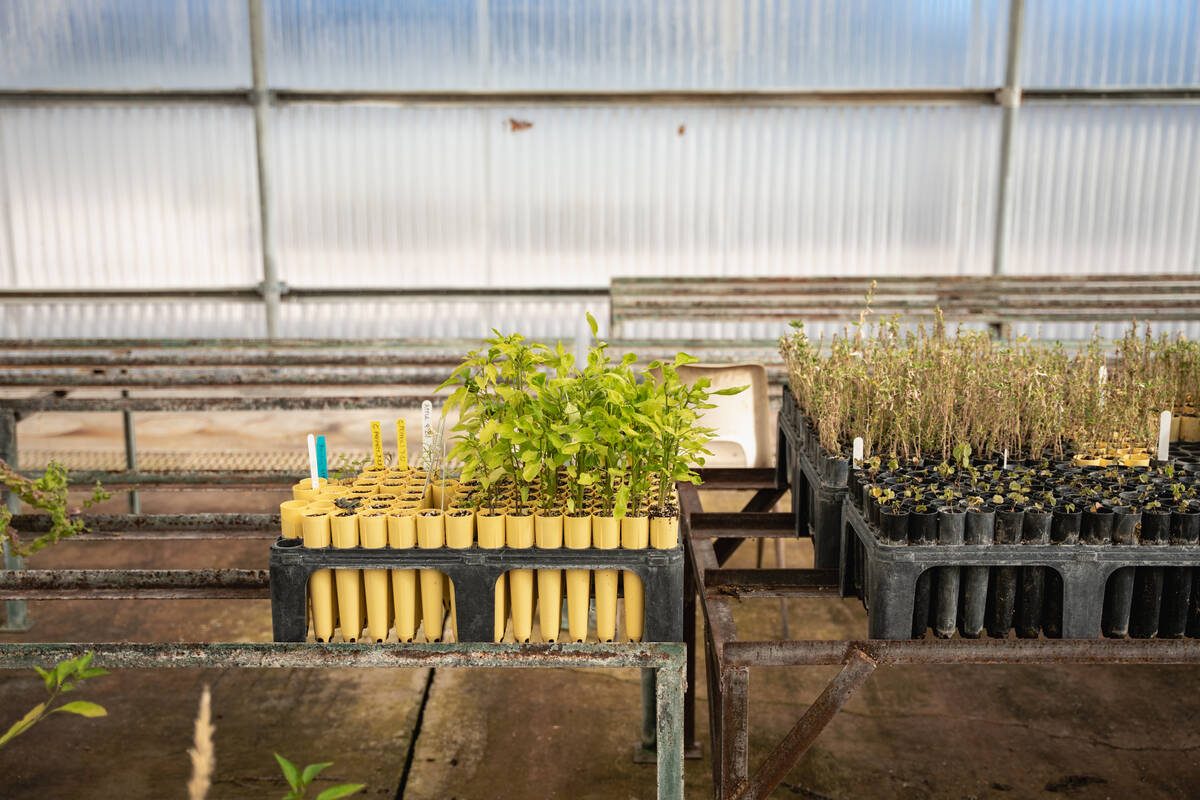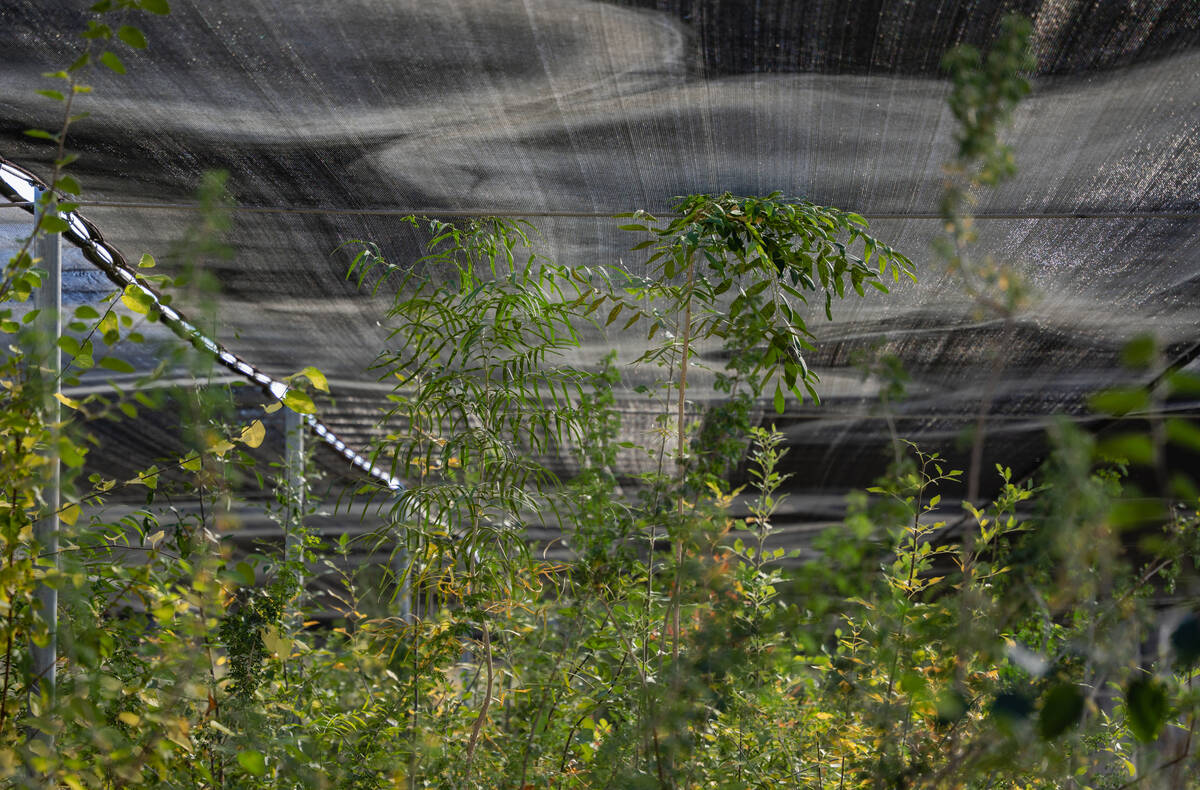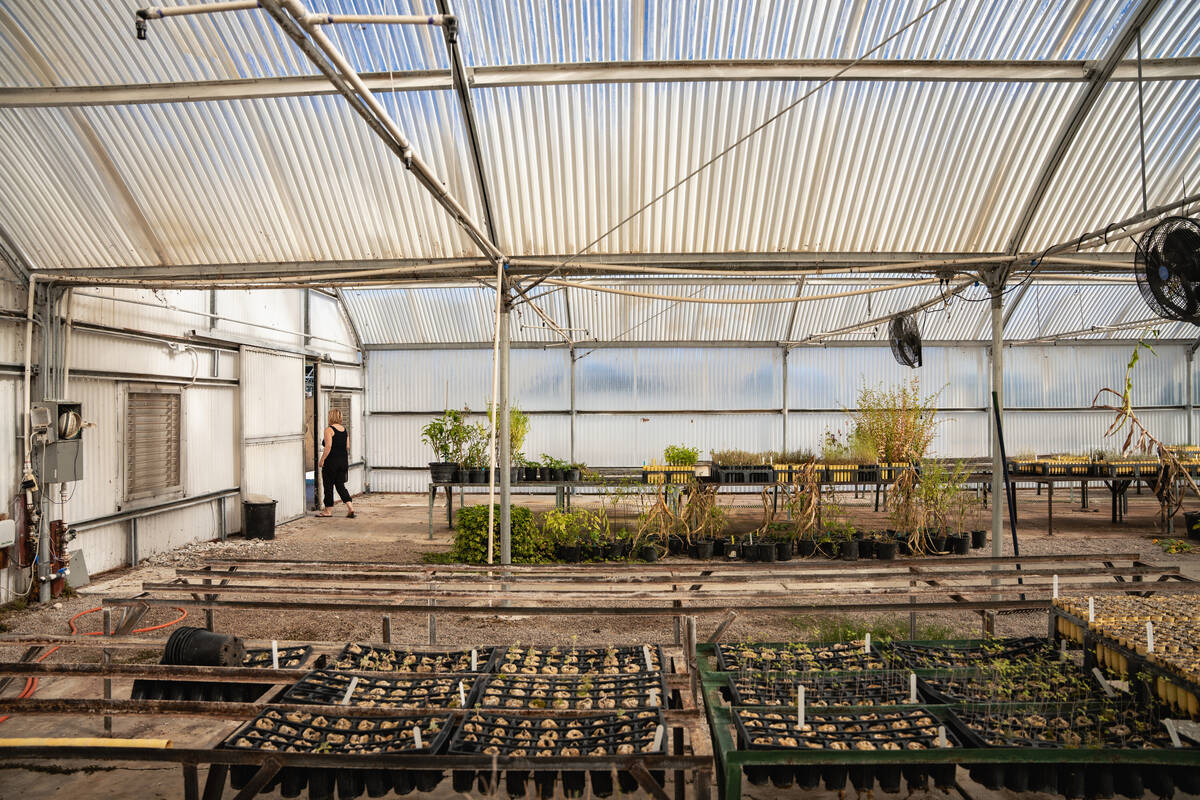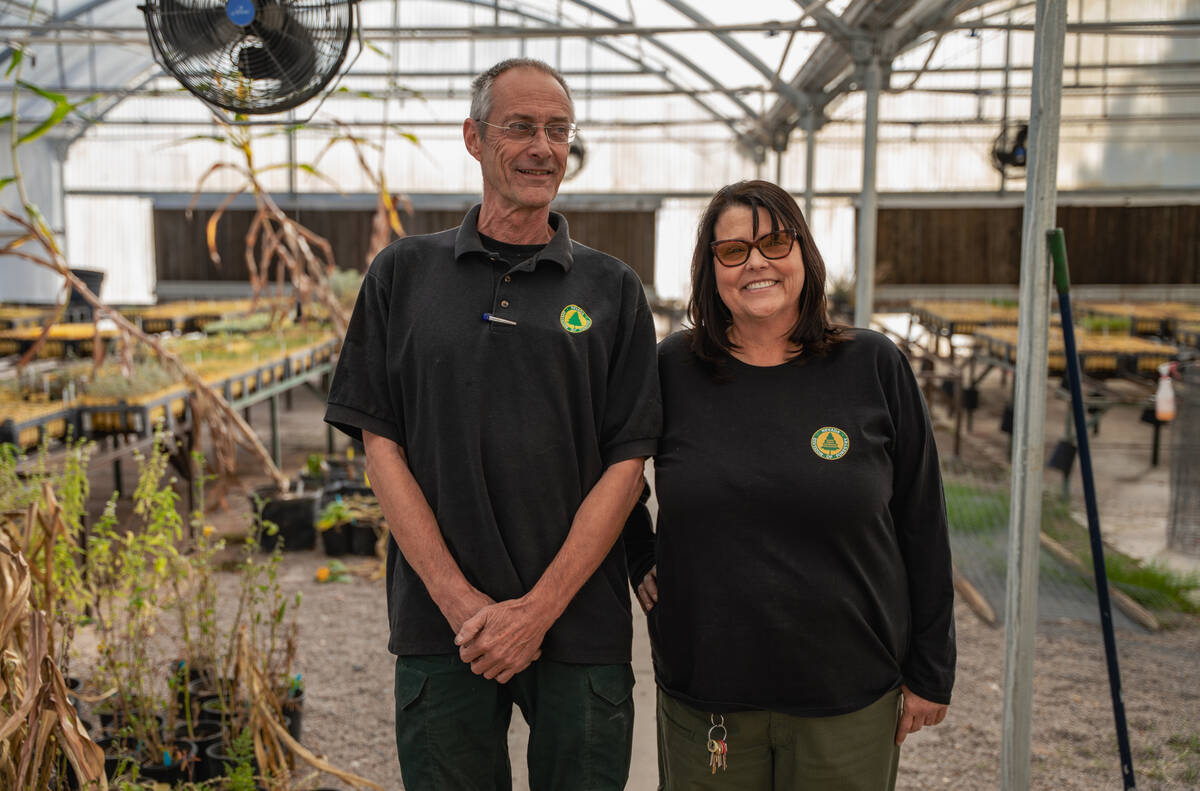This government-run nursery in Las Vegas is staffed by Nevada inmates
Venture into Floyd Lamb Park at Tule Springs, and you’re likely to find Amy Johnson and Tim Palmer tending to rows of plants that will one day restore a Mojave Desert ecosystem. And you might meet the six female inmates who help them do it.
The Las Vegas State Tree Nursery is a well-kept secret at the northern edge of the valley, providing government agencies and private companies with native and desert-adapted foliage. Whether it’s for a new park or to rehabilitate land altered by wildfire or mining, the nursery is a go-to for large quantities of trees or plants needed quickly.
“Anything we make goes right back into the nursery. We’re not really making profit; we’re just giving people the plants that need to be out there,” said Johnson, with the nursery’s live-in cat, Sid, in tow.
The nursery has long partnered with a cat shelter in town for rodent control, and Sid — affectionately nicknamed “The Royal Sidness” — has stuck around.
Between the Las Vegas nursery and its sister nursery in New Washoe City, the Nevada Division of Forestry can accommodate most any need for trees or plants in the Great Basin and the Mojave Desert. One batch of plants Johnson pointed out on a recent tour of the facility was earmarked to revegetate an area that previously had solar panels near Needles, California.
At least two dozen states and U.S. territories have government nurseries, with those in Nevada opening in the mid-1970s because of a state law, said Cory King, who operates the nursery up north.
The focus of both nurseries is on restoration and putting plants in the ground that will thrive in desert soils, King said.
“A lot of these plants are going out where there is no irrigation, so they need to survive on their own,” King said. “We’re trying to fill in those gaps that come from human disturbance.”
Clark County inmates learn life skills
Inside his office, Palmer has a bulletin board full of pictures showing a crew of female inmates tending to “their babies” — the plants he teaches them to cultivate.
Most weekdays, he drives a bus to the Jean Conservation Camp, a minimum security prison with about 240 female inmates, roughly 30 miles south of Las Vegas. Palmer picks up the crew of six, part of a larger state program that puts prisioners to work fighting wildfires, maintining trails or tending to seeds.
The lush greenery of Floyd Lamb Park and the nursery is a welcome respite from the gray, concrete walls of the prison situated out in the open desert.
“It doesn’t matter where on this planet you go, there will be plants,” Palmer said. “If you know how to grow plants here, and if you bugger off to Florida one day, they’ve got plants, as well.”
And the program pays dividends when it comes to teaching the inmates practical skills that could help them secure a job in an industry such as landscaping. Along the way, Johnson said, they pick up how to take care of living things.
For many, the experience has strengthened their relationships with their own children, Johnson said.
“They can see what they’ve done, that they seeded something right,” Johnson said. “Then they come back in a couple of weeks and actually see the results.”
For Palmer, it’s a joy to be a part of the inmates’ rehabilitation process. After returning from a trip to visit his parents in England, he had six women waiting for him, eager to get back into the nursery.
“I got an earful when I got back saying they need to come and see their babies,” Palmer said.
The Las Vegas State Tree Nursery is open to the public. Residents can shop for plants that aren’t under contract for an agency or company. In Las Vegas, the growing season lasts from February to late November, meaning the best time to head out to the nursery might be in the new year, Johnson said.
Those who only wish to go to the nursery do not need to pay the entrance fee at the park gate.
Contact Alan Halaly at ahalaly@reviewjournal.com. Follow @AlanHalaly on X.



